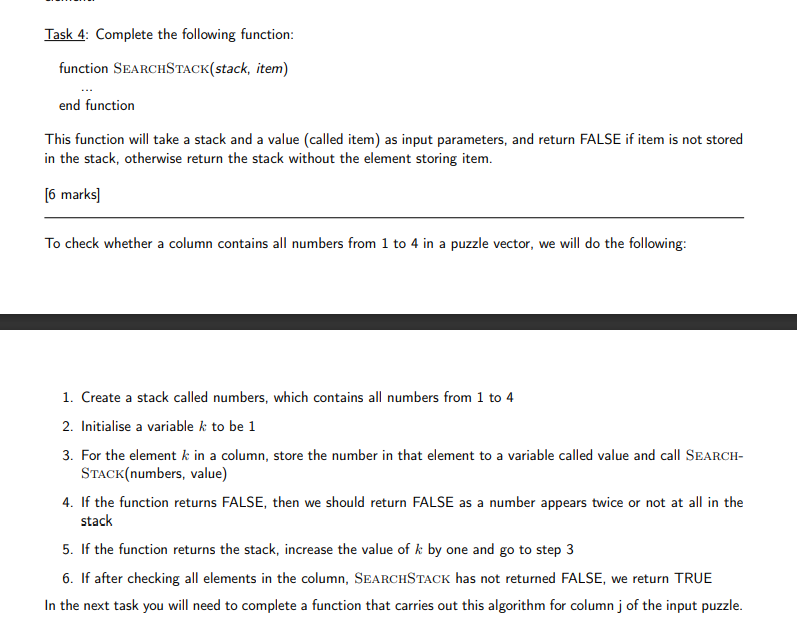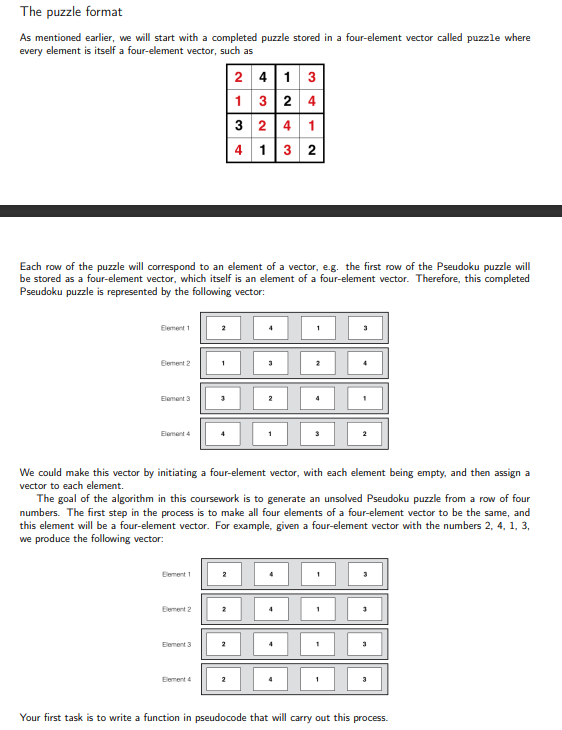

Task 4: Complete the following function: function SEARCHSTACK(stack, item) end function This function will take a stack and a value (called item) as input parameters, and return FALSE if item is not stored in the stack, otherwise return the stack without the element storing item. [6 marks) To check whether a column contains all numbers from 1 to 4 in a puzzle vector, we will do the following: 1. Create a stack called numbers, which contains all numbers from 1 to 4 2. Initialise a variable k to be 1 3. For the element k in a column, store the number in that element to a variable called value and call SEARCH- STACK(numbers, value) 4. If the function returns FALSE, then we should return FALSE as a number appears twice or not at all in the stack 5. If the function returns the stack, increase the value of k by one and go to step 3 6. If after checking all elements in the column, SEARCHSTACK has not returned FALSE, we return TRUE In the next task you will need to complete a function that carries out this algorithm for column j of the input puzzle. w The puzzle format As mentioned earlier, we will start with a completed puzzle stored in a four-element vector called puzzle where every element is itself a four-element vector, such as 2 41 3 1 3 2 4 3 2 4 1 4 1 3 2 Each row of the puzzle will correspond to an element of a vector, e.g. the first row of the Pseudoku puzzle will be stored as a four-element vector, which itself is an element of a four-element vector. Therefore, this completed Pseudoku puzzle is represented by the following vector: Element1 Element 2 Elements Element 4 We could make this vector by initiating a four-element vector, with each element being empty, and then assign a vector to each element. The goal of the algorithm in this coursework is to generate an unsolved Pseudoku puzzle from a row of four numbers. The first step in the process is to make all four elements of a four-element vector to be the same, and this element will be a four-element vector. For example, given a four-element vector with the numbers 2, 4, 1, 3, we produce the following vector: Element1 Element 2 Element 3 Element 3 Your first task is to write a function in pseudocode that will carry out this process








